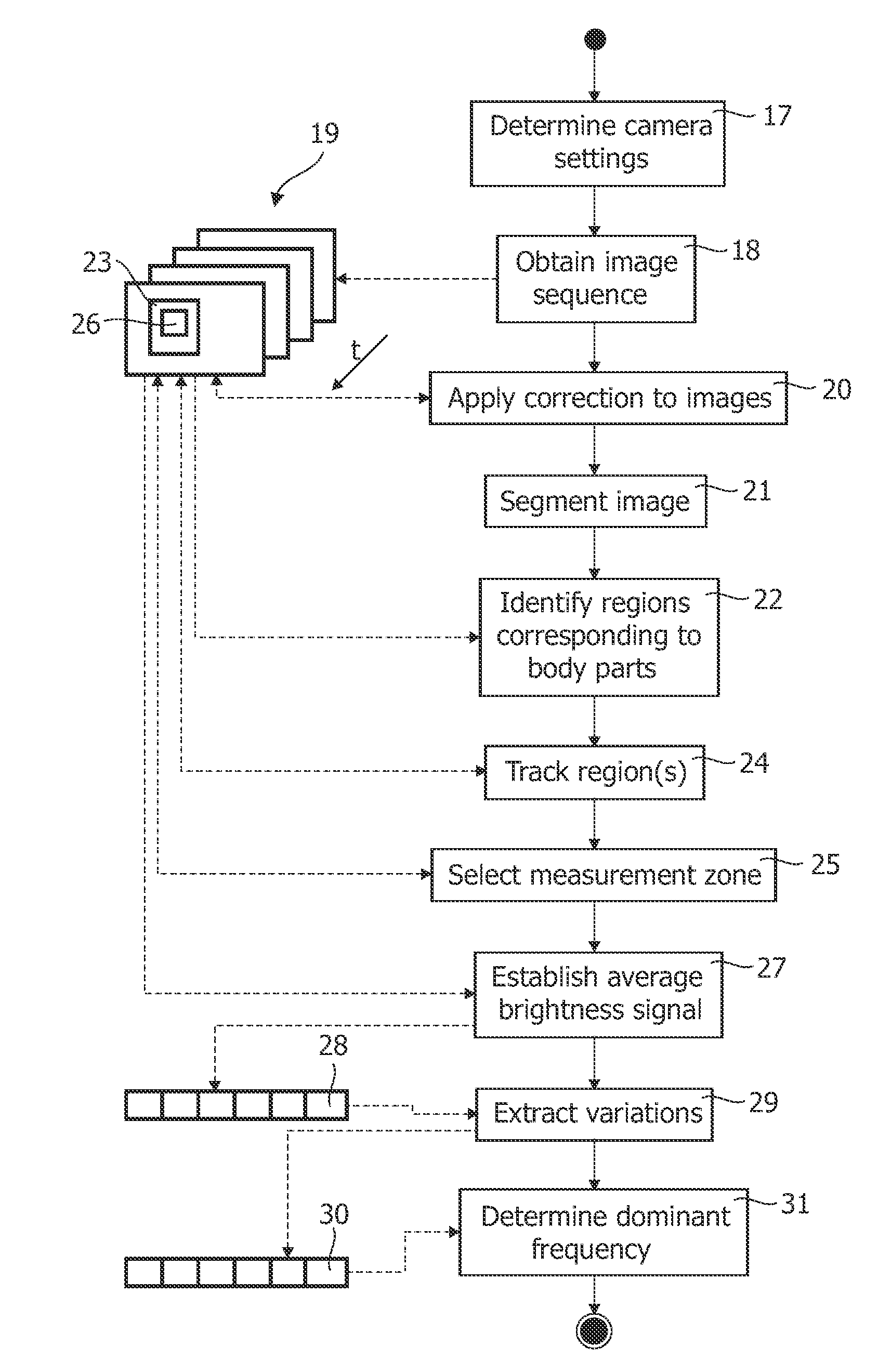Processing images of at least one living being
a living being and processing method technology, applied in image enhancement, instruments, applications, etc., can solve the problems of not being able not being able to fool the conditional access system, and being unable to provide a fingerprint detector with a wax cast of an absent person's finger, etc., to achieve the effect of lowering the stress level of the person
- Summary
- Abstract
- Description
- Claims
- Application Information
AI Technical Summary
Benefits of technology
Problems solved by technology
Method used
Image
Examples
Embodiment Construction
[0056]Referring to FIG. 1, an example is given here of a first system 1 that is arranged to process a sequence of images. The first system 1 carries out this processing in order to determine at least one of the presence and a frequency value of at least one peak in a spectrum of a signal based on the pixel data of the images corresponding to a frequency of a periodic physiological phenomenon. The presence of a living being is inferred from the presence of the peak, and used as a binary input for one or more system processes. The frequency of the peak is used as an input in at least one of those processes.
[0057]The first system 1 includes a digital camera 2 arranged to record a sequence of digital images in quick succession. The first system 1 further includes a data processing device 3 which is in communication with the digital camera 2 for the purpose of obtaining the image data, but also to control the operation of the digital camera 2, as will be explained.
[0058]The digital image...
PUM
 Login to View More
Login to View More Abstract
Description
Claims
Application Information
 Login to View More
Login to View More - R&D
- Intellectual Property
- Life Sciences
- Materials
- Tech Scout
- Unparalleled Data Quality
- Higher Quality Content
- 60% Fewer Hallucinations
Browse by: Latest US Patents, China's latest patents, Technical Efficacy Thesaurus, Application Domain, Technology Topic, Popular Technical Reports.
© 2025 PatSnap. All rights reserved.Legal|Privacy policy|Modern Slavery Act Transparency Statement|Sitemap|About US| Contact US: help@patsnap.com



